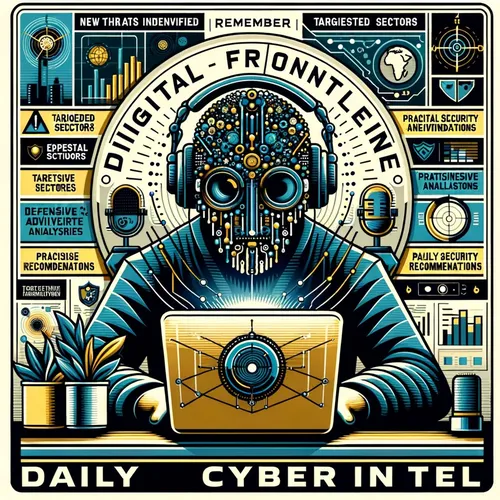China's Cyber Spies Unleashed: Hacking Spree Targets US Gov, Taiwan Chips & More in Bold Espionage Blitz
- Author
- Quiet. Please
- Published
- Mon 21 Jul 2025
- Episode Link
- https://www.spreaker.com/episode/china-s-cyber-spies-unleashed-hacking-spree-targets-us-gov-taiwan-chips-more-in-bold-espionage-blitz--67059080
This is your Digital Frontline: Daily China Cyber Intel podcast.
Alright listeners, Ting here, and trust me, you’ll want your two-factor authentication before you settle in for today’s Digital Frontline. It’s Monday, July 21, 2025—not that dates matter to APT41 or UNC3886, because these Chinese cyber operators never take a vacation. Let’s plug into the latest.
Over just the past 24 hours, we’ve watched China-linked actors escalate big-league espionage. Microsoft’s security report today lays it out: Chinese state-backed operators, sometimes blending tactics with freelance cybercriminals, continue leveraging malware, phishing, and a host of living-off-the-land tricks to penetrate everything from US government and corporate networks to critical infrastructure. You heard right—Microsoft clocks over 600 million attempted hacks at their customers every day, and with election season heating up, the tempo is only increasing as these actors tweak focus to legislative and state races instead of the presidential front lines.
But they’re hardly satisfied stopping with digital democracy. Mandiant, the Google cyber sleuths, have nailed down UNC3886—a group with serious links to Beijing—hammering critical sectors in Singapore, including energy, finance, healthcare, and transportation, by targeting the soft underbelly of digital infrastructure. Think water systems, power grids, emergency services: the good stuff. Singapore’s own National Security Minister, K. Shanmugam, warned last Friday that UNC3886 is hunting for high-value, strategic targets—a reminder that these campaigns are about more than just data, they’re about leverage.
Next stop, the semiconductor capital: Taiwan. According to Business Insurance and Reuters, Chinese-affiliated espionage gangs have sharply increased cyberattacks against the Taiwanese chip industry. Targets? Major manufacturers and investment analysts—anyone with access to trade secrets or intellectual property that could tip the scale in ongoing tech races between the US, China, and, you guessed it, Europe.
If your heart isn’t already racing, get this: a new global zero-day exploit in Microsoft SharePoint just hit, catching at least two US federal agencies, several European governments, an energy company, and even an Asian telco in its net. According to the Washington Post’s sources, this enables attackers virtually full access to sensitive files and configurations—enough to make any IT admin choke on their cold brew. Microsoft has issued a patch for the most vulnerable versions, but not all are covered. The Cybersecurity and Infrastructure Security Agency (CISA) is begging folks to lock down exposed instances, audit file access, sniff out anomalous logins, and—if you haven’t already—slide SharePoint behind a VPN like it’s the last slice of good pizza at a networking mixer.
So, what’s a business to do? First, stay patched—anything less is an engraved invitation to UNC3886’s housewarming party. Close VPN gaps. Harden access protocols by enforcing tough privileges on sensitive systems, especially as attackers move laterally from compromised endpoints to SharePoint and beyond. Monitor for odd file sharing and email bursts—classic signals an adversary is inside, not knocking. And, this week, double down on staff awareness: phishing emails are still the #1 delivery method for all this sophisticated malware.
Let’s be real—cyberthreats from China are mutating faster than my neighbor’s AI-generated memes, and expert consensus is unified: beef up defense-in-depth, segment networks, and treat cyber hygiene like your business depends on it—because it does.
Thanks for tuning in to Digital Frontline: Daily China Cyber Intel. Subscribe so you’re not the last in the room to know what’s hitting the wire. This has been a quiet please production, for more check out quiet please dot ai.
For more
